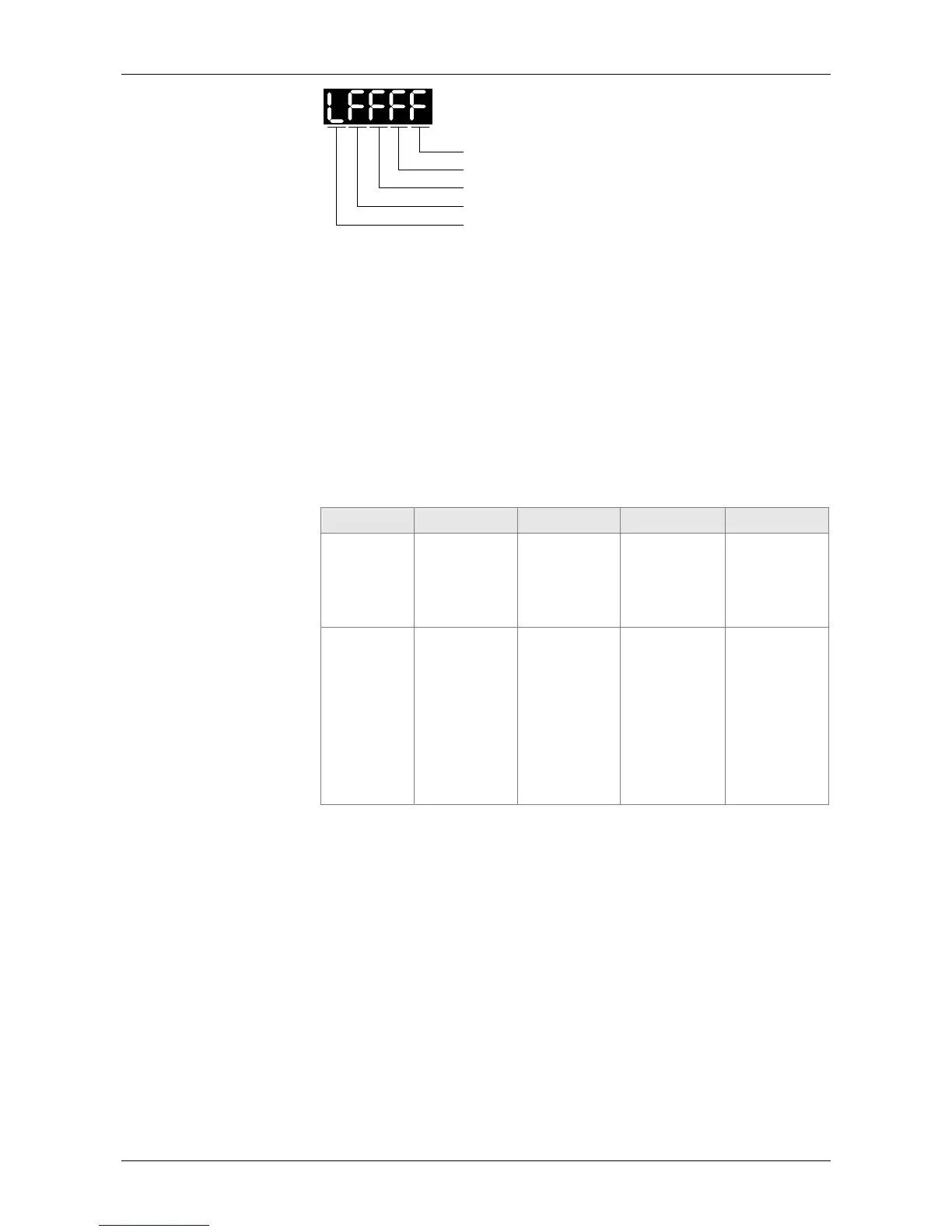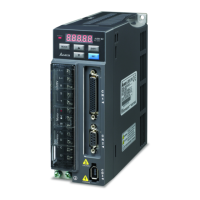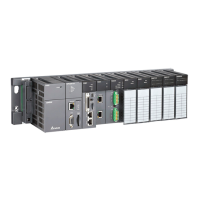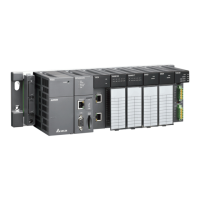ASDA-A2 Chapter 8 Parameters
Revision February, 2017 8-179
Settings:
X
Y
Z
U
Low word
X: See the following table
Y: 0-CAPTURE is not working
1-AUX ENC (linear scale) is set as the source
2-PULSE Cmd
3-Main ENC (main encoder)
When the source of CMP is CAP axis, the source Y of CAP cannot
be changed.
Z: 0-NO, 1-NC
U: trigger the minimum interval (Unit: ms)
bit 3 2 1 0
X function Execute PR
when
finishing
capturing
After
capturing the
first data,
CMP is
activated.
Reset the
position of
the first data
Activate CAP
Description Execute PR
#50 after
finishing CAP
It is invalid
when CMP is
activated.
After
capturing the
first data,
reset the
position
coordinate
Starts to
capture when
it is set to 1.
After
finishing
capturing,
this bit
becomes 0
automatically
.
bit 0: When the value set by P5-38 is bigger than 0, set bit 0 to 1 will
activate CAP function and DO.CAP_OK is OFF. Every time,
when a data is captured, the value of P5-38 will minus one. When
the P5-38 is 0, it means the capture function is completed,
DO.CAP_OK is ON and bit 0 will be reset to 0 automatically. If
P5-38 equals to 0, set bit 0 to 1 will not activate CAP function.
DO.CAP_OK is OFF and bit 0 will automatically be set to 0. If
CAP function is activated, it cannot set 1 to bit 0. It only can be
written 0 to disable CAP function.
bit 1: If this bit is 1, when capturing the first data, the current position of
CAP axis will be set to the value of P5-76.
bit 2: If this bit is 1, when capturing the first data, CMP will be activated.
(When bit 0 of P5-59 is set to 1 and P5-58 is set to the previous
value.) If CMP has been activated, then this function is invalid.
bit 3: If this bit is 1, as soon as the CAP finished, PR procedure #50 will
be triggered automatically.
